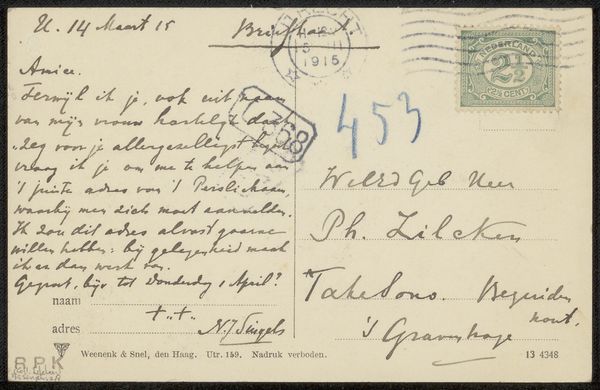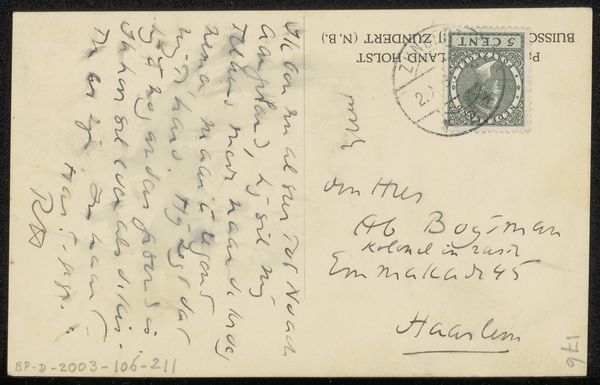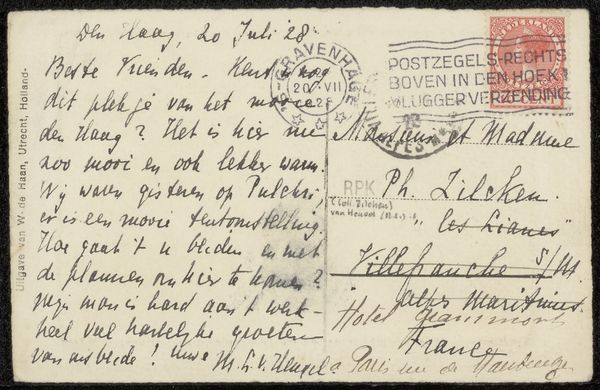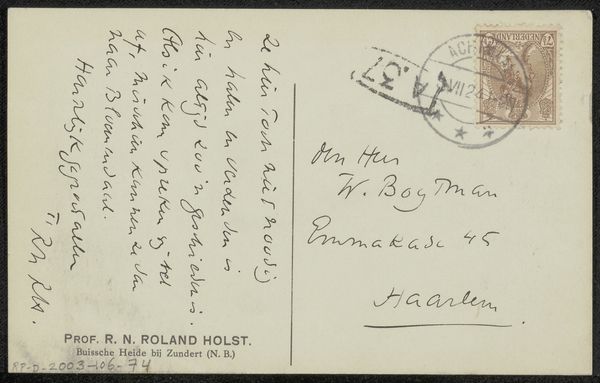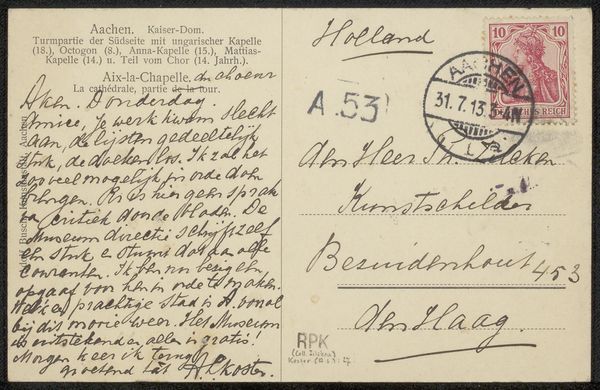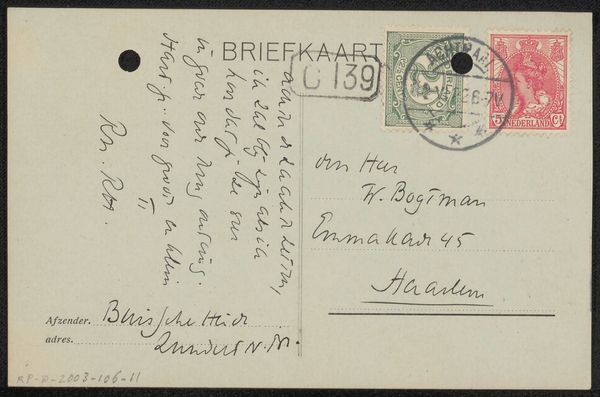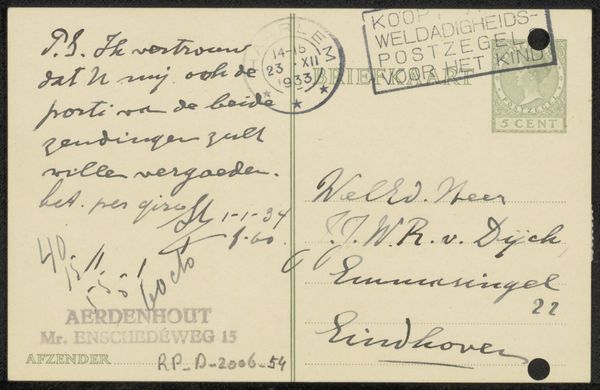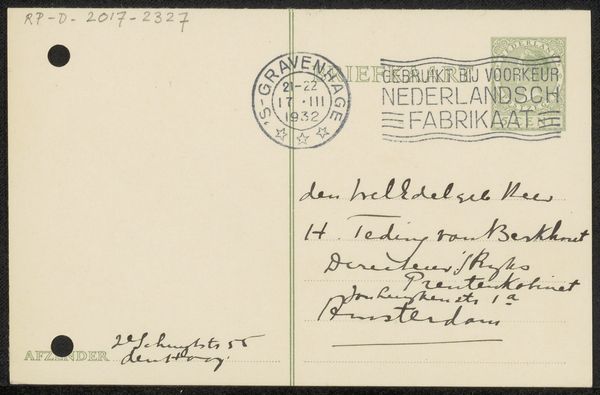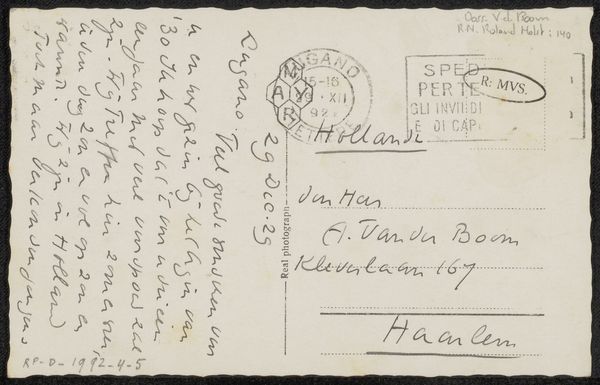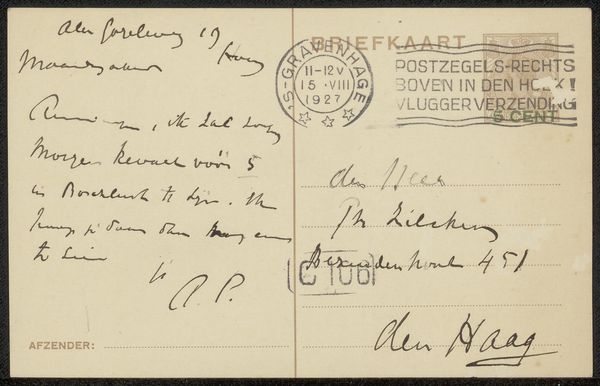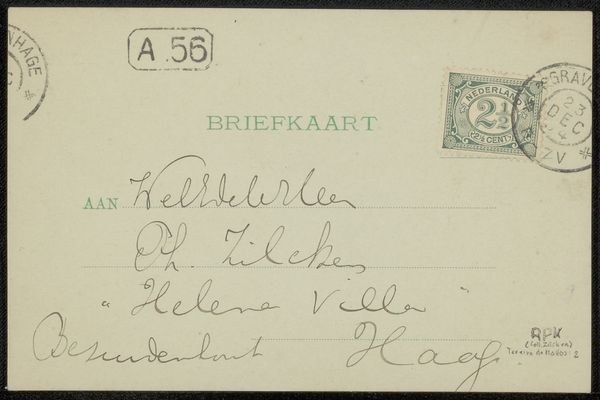
drawing, ink, pen
#
portrait
#
drawing
#
comic strip sketch
#
hand-lettering
#
hand drawn type
#
hand lettering
#
personal sketchbook
#
ink
#
hand-drawn typeface
#
ink colored
#
pen work
#
sketchbook drawing
#
pen
#
sketchbook art
Copyright: Rijks Museum: Open Domain
Editor: So, this is "Prentbriefkaart aan August Allebé," which translates to Postcard to August Allebé, and dates to before 1919, by Hendrick Peter Godfried Quack. It’s an ink drawing. It gives off this very personal, immediate vibe, like peeking into someone's sketchbook. How do you read it? Curator: This seemingly simple postcard vibrates with layers of meaning. Postcards themselves became powerful symbols during the turn of the century, signifying connection and communication in a rapidly modernizing world. Note the hand-lettering, a deliberate choice against the backdrop of emerging printing technologies. Why use the hand? What statement does that make? Editor: I guess it's more personal, more intimate? Curator: Precisely. The personal touch elevates a simple message. And the portrait style of the stamp itself: royalty. Consider also the tension between the sender’s location – possibly Germany, evidenced by the stamp – and the receiver in Amsterdam. Does it symbolize a fractured Europe, or cultural exchange across borders? The simple, everyday act of corresponding now layered with meaning. Editor: I never would have thought about it like that, the contrast between the mechanical and personal, or the stamp as portrait. That makes me see how much intent goes into something we might otherwise dismiss. Curator: Indeed. The past speaks to us through the objects people valued enough to create or keep, inviting us to consider, who were they? and how might we see our world, today, reflected in these older artifacts?
Comments
No comments
Be the first to comment and join the conversation on the ultimate creative platform.
